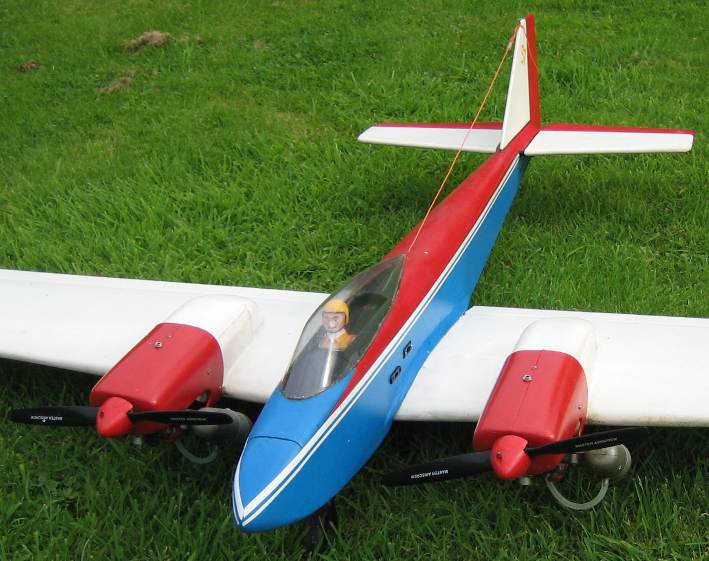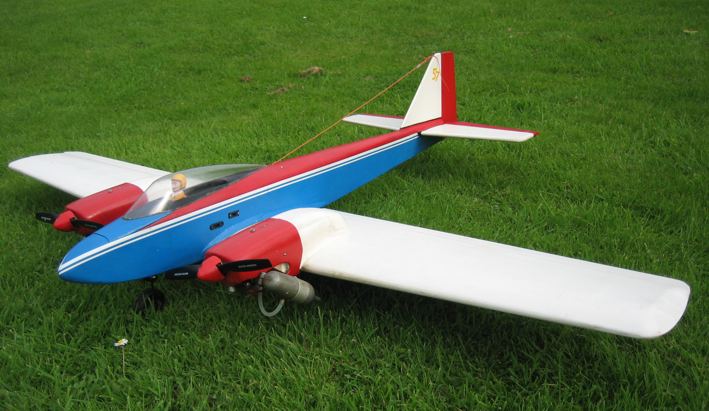
PrecedentTwinAce
(Model No. 57)
This model was given to me by "Brummy Dave" Illingworth, after he'd "gone all-electric"

It came ready-built and well-flown, and also complete with a pair of SuperTigre .29's installed

All I had to do was to "free-up" the engines after their decade+ in storage, and then install my own radio gear
After the first flying session, I installed a pair of remote fuel valves and glow plug sockets. Although these were not absolutely essential, they do make re-fuelling and engine-starting much easier
The model feels quite heavy, what with it's twin engines, tanks and throttle servos, so I didn't expect too much of its flying ability, but it has turned-out to fly really well. I had an engine die during the second flight but still managed to nurse it home on the remaining engine - albeit in a prop-hanging/knife-edging sort of way. But it survived - and I learned something about flying a twin-engined model on only one engine! I thought that the engine had stopped because the needle was very loose and had vibrated "out of tune"
The second outing was even less successful than the first. The model had six (very short) flights, with five of them ending when the starboard engine died in-flight. I managed to coax the model back to the strip and land it safely each time this happened, but it was never a comfortable operation, what with the model trying to crash all the way home. I eventually spotted that there was a small nick in a fuel line, so decided that all plumbing would be renewed before the next flying session. I suppose I should have done this right at the start, but re-plumbing meant cutting-through the tank-bays in order to gain access, and having to do this was a big put-off - but then again, dying engines are an even bigger put-off! The re-plumbing has now been done
The third outing was a total disaster! Again an engine stopped running in-flight - but this time I made a hash of the recovery. The model was travelling down-wind and towards me quite quickly in a strong wind when the engine stopped. I couldn't hear the engine(s) due to the wind-noise, so the first indication that something had gone wrong was when the model went into a flick-spin. Unfortunately there wasn't enough height to recover, so the model hit the deck quite hard breaking the wing in two placed and smashing both engine mounts and one of the needle-valves. It has now been repaired - and I think that I've found the reason for all the engine problems: The chrome plating on one of the the clunks was flaking-off! I'm now starting to believe my club-mate's comment when he first saw this model: "Twin engines are double-trouble!